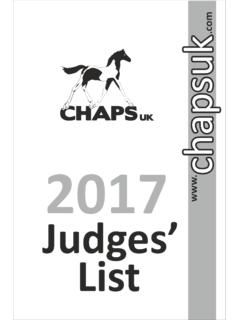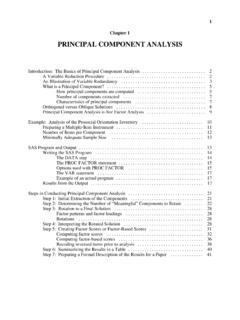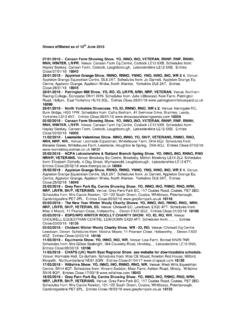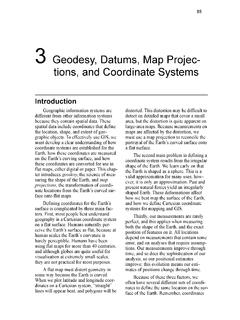Transcription of Chemical Hair Relaxing and Soft Curl Permanent - Brands …
1 Chemical HairRelaxing and SoftCurl Permanent13 CHAPTER36513 LEARNING OBJECTIVESA fter completing this chapter, you should be able the purpose of Chemical the different products used inchemical hair the difference between sodiumhydroxide relaxers and thio the three basic steps ofchemical hair client analyzation for a chemicalhair Relaxing the procedures used for asodium hydroxide hair Relaxing the procedures used for anammonium thioglycolate hair the procedures used for achemical the procedures used for asoft curl hair Relaxing is the process of permanently rearrangingthe basic structure of overly curly hair into a straight form.
2 Whendone professionally, it leaves the hair straight and in a satisfacto-ry condition, to be set into almost any style. 4 The basic products that are used in Chemical hair Relaxing are achemical hair relaxer, a neutralizer, a protein-rich moisturizer tostabilize the hair, and a petroleum cream, which is used as a pro-tective base to protect the client s scalp during the sodiumhydroxide Chemical straightening process. 4 Chemical HAIR RELAXERSThe two general types of hair relaxers are sodium hydroxide,which does not require pre-shampooing, and ammonium thioglycolate,which may require hydroxide (caustic type hair relaxer) both softens andswells hair fibers.
3 As the solution penetrates into the corticallayer, the cross-bonds (sulfur and hydrogen) are broken. Theaction of the comb, the brush, or the hands in smoothing the hairand distributing the Chemical straightens the softened TEXTBOOK OF COSMETOLOGYINTRODUCTION4 Completed:Learning Objective#1 DEFINE PURPOSE OFCHEMICAL HAIR RELAXINGThis chapter provides you with the necessary information to master these National Industry Skill Standards for Entry-Level Cosmetologists: Consulting with clients to determine their needs and preferences Performing hair relaxation and wave formation techniques in accordance with manufacturer sdirections Providing styling and finishing techniques to complete a hairstyle to the satisfaction of the client Conducting services in a safe environment, taking measures to prevent the spread of infectiousand contagious diseasesNATIONAL SKILL STANDARDSCHEMICAL HAIR Relaxing PRODUCTS4 Completed.
4 Learning Objective#2 LIST Chemical HAIRRELAXING PRODUCTSM anufacturers vary the sodium hydroxide content of the solu-tion from 11 2% to 3%, and the pH factor between 12 and 14. Ingeneral, the more sodium hydroxide used and the higher the pH,the quicker the Chemical reaction will take place on the hair, andthe greater the danger will be of hair ammonium thioglycolate (thio type relaxer oftencalled a softener, rearranger, or breakdown cream) is less drasticin its action than sodium hydroxide, it softens and relaxes overlycurly hair in somewhat the same manner.
5 You may recall that thisis the same solution used in Permanent waving. 4 NEUTRALIZERThe neutralizerstops the action of any Chemical relaxer that mayremain in the hair after rinsing. The neutralizer for a thio typerelaxer re-forms the cysteine (sulfur) cross-bonds in their newposition and rehardens the AND NO BASE FORMULASWhen using sodium hydroxide, there are two types of formulas,base and no base. The base formula is a petroleum cream that isdesigned to protect the client s skin and scalp during the sodiumhydroxide Chemical straightening process.
6 This protective basealso is important during a Chemical straightening retouch. It isapplied to protect hair that has been straightened previously, andto prevent over-processing and hair cream has a lighter consistency than petroleumjelly, and is formulated to melt at body temperature. The meltingprocess ensures complete protective coverage of the scalp andother areas with a thin, oily coating. This helps to prevent burn-ing and/or irritation of the scalp and skin. Previously treated hairshould be protected with cream conditioner during the straight-ening recent years no base relaxers have become more common-ly used.
7 These relaxers have the same Chemical reaction on thehair, although usually the reaction is milder. The procedure forthe application of a no base relaxer is the same as for a regularrelaxer except that the base cream is not applied. It is advisable touse a protective cream around the hairline and over the 13 Chemical HAIR Relaxing AND soft curl PERMANENT367 CAUTIONB ecause of the high alkaline content of sodium hydroxide, greatcare must be taken in its :Learning Objective#3 SODIUM HYDROXIDE VS. THIO RELAXERSAll Chemical hair Relaxing involves three basic steps.
8 Processing,neutralizing,and soon as the Chemical relaxer is applied, the hair begins to soft -en so that the Chemical can penetrate to loosen and relax the nat-ural soon as the hair has been sufficiently processed, the chemicalrelaxer is thoroughly rinsed out with warm water, followed byeither a built-in shampoo neutralizer or a prescribed shampooand on the client s needs, the conditioner may be part of aseries of hair treatments, or it may be applied to the hair after therelaxing treatment. 4 RECOMMENDED STRENGTH OF RELAXERThe strength of relaxer used is determined by the strand test.
9 Thefollowing guidelines can help in determining which strengthrelaxer to use for the Fine or tinted hair Use mild Normal, medium-textured virgin hair Use regular Coarse virgin hair Use strong or super relaxer (but if theclient has a sensitive scalp, use a regular or mild relaxer).368 STANDARD TEXTBOOK OF COSMETOLOGY4 Completed:Learning Objective#4 THREE BASIC STEPS INCHEMICAL HAIRRELAXINGCAUTIONO verly curly hair that has been damaged from heat appliances orother chemicals must be reconditioned before a relaxer service treated with lighteners or metallic dyes must not be givena Chemical hair relaxer, because it might cause excessive damageor IN Chemical HAIR RELAXINGIt is essential that the cosmetologist have a working knowledge ofhuman hair, particularly when giving a Relaxing treatment.
10 Youwill learn to recognize the qualities of hair by visible inspection,feel, and special tests. Before attempting to give a Relaxing treat-ment to overly curly hair, the cosmetologist must judge its tex-ture, porosity, elasticity, and the extent, if any, of damage to thehair. (For more complete information on hair analysis, refer tothe chapter on Permanent waving.)CLIENT S HAIR HISTORYTo help ensure consistent, satisfactory results, records should bekept of each Chemical hair Relaxing treatment. These recordsshould include the client s hair history, products and condition-ers used (see sample form below), and the client s release state-ment.





